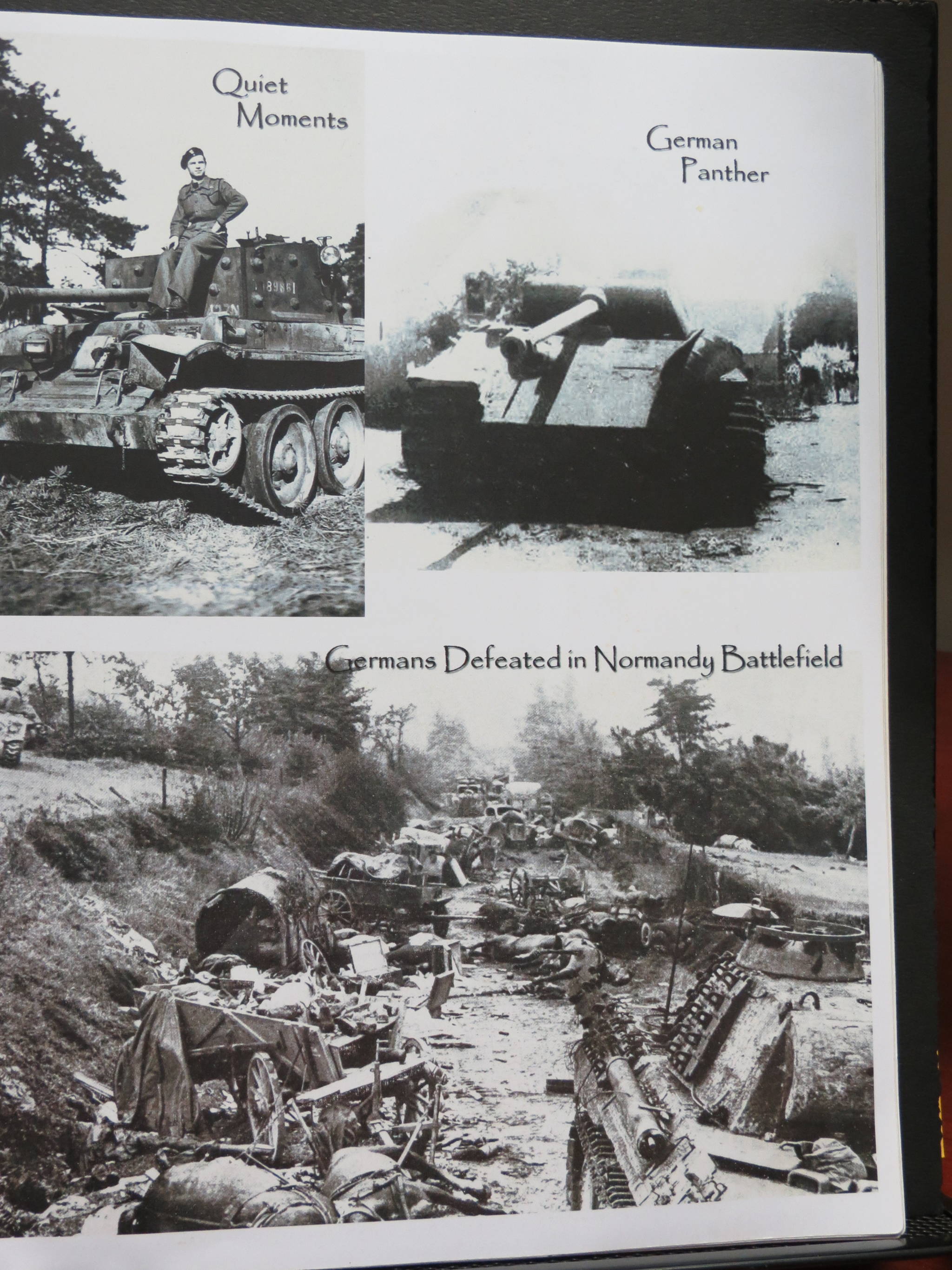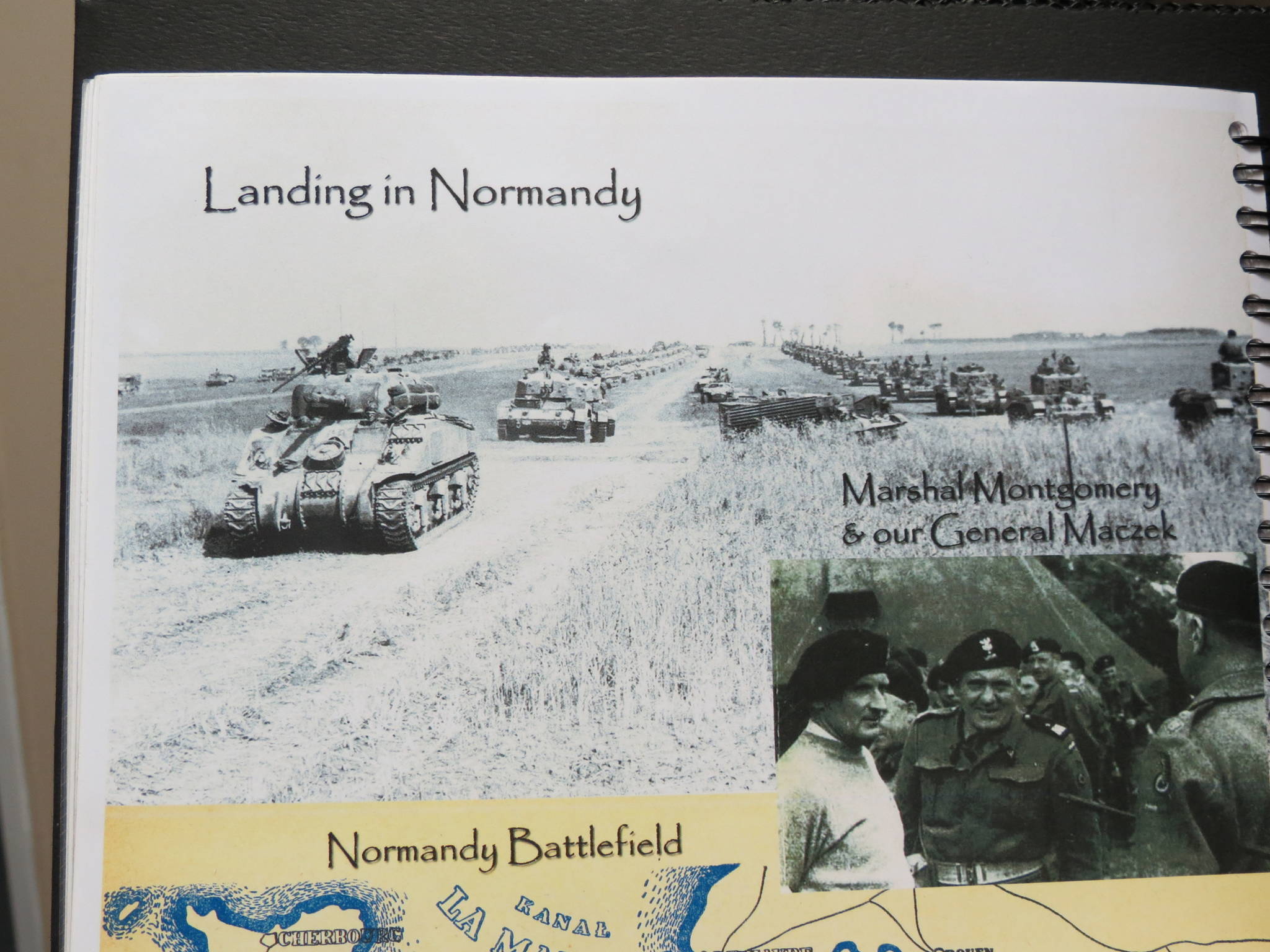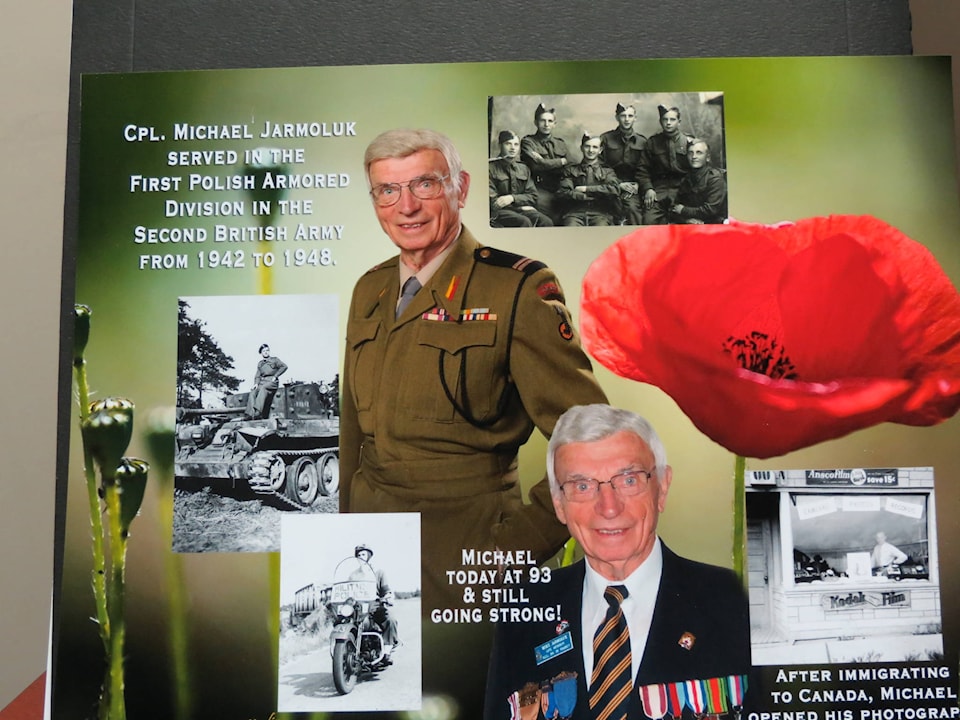Throughout history, D-Day has been referred to as the beginning of the end.
June 6, 1944.
“Yes, that was D-Day,” said Michael Jarmoluk, “but the war was far from over.”
Jarmoluk knows this to be true, because when the Battle of Normandy raged and the night sky was lit up with flares, and the bombs fell fast and furious, he was 20 years old and he was there.
He remembers moments; he remembers terror and he remembers digging in the dirt to protect himself from the bombs and praying.
“I was not a hero,” he said. “I was just trying to stay alive.”
He was decorated with the Battle Cross Medal for Bravery and promoted to corporal after the Battle of Normandy, but he mentions that fact only briefly.
The aging veteran sits quietly as he struggles to give voice to those memories of the war that live inside him like a movie that has been rewound many times.
Jarmoluk was a member of the First Polish Armored Division of the Second British Army when D-Day took place.
Like most of the soldiers among the troops who fought on those beaches so long ago, he was really just a boy, a boy who grew up in Poland, a boy who loved to skate in the winter and pick berries with his family in the summer.
He was a good student, and in Grade 9, he won a scholarship that included a free trip to Warsaw.
But in September 1939, the idyllic life he knew in Poland came to an abrupt halt.
The war had begun, and when Russia invaded the eastern half of Poland, he and his family were taken to a work camp in Siberia.
From then on, life became nothing more than drudgery, cold and hunger. But in 1941, Jarmoluk’s life changed again when Poles in labour camps throughout Russia were released to help fight the Germans.
And then, finally, Jarmoluk found himself among 200,000 young men who were put under British command to go to the Middle East, so a second front could be opened in Germany.
He arrived in England in August, 1942.
“We were asked what regiment we wanted to go into, and I chose to go to the armory division, which was organized in Scotland. I was assigned the First Polish Armored Division under Commanding General Maczek. We were in the ranks of the Second British Army under General Montgomery.”
The British troops gradually moved from Scotland to northern England, joining concentrated troops of many nationalities all preparing for the invasion of Europe.
When D-Day happened on June 6, 1944, Jarmoluk and the Polish corps who were in the ranks of the Second British Army were among the troops on their way to Normandy to help fight the Germans.
“In July, our division was loading equipment in different British southern ports. My company loaded at the port of Tilbury on the river Thames.
Crossing the English Channel we saw thousands of ships; nothing but ships, all heading to Normandy.”
Jarmoluk pauses and shields his eyes with his hand as if he is looking at something only he can see.
“I can still see them,” he said. “All those ships.”
Finally, he continues.
“We landed on the two beaches called Gold and Sword. As it was already a few weeks after the invasion, the beaches were relatively secure, but we could hear the constant shelling.”
The beaches were already packed with troops, confusion and fear stamped on their young faces.
“We couldn’t tell where the fire (shelling) was coming from,” Jarmoluk said.
Troops were eventually sorted and the young soldier found himself to be part of the Second Canadian Corps. which included Canadians, British and Polish troops.
“We kept the same front, sometimes relieving each other in action,” he said.
It turned out to be a long, hot summer with heavy fighting. The German air force continued to fly, sometimes coming in very low so as to avoid radar.
Jarmoluk remembered fighting for weeks in full gear, often going without proper food or rest.
During the fighting the soldiers encountered few French people as they had all been evacuated.
“Orchards were abundant in one area and we would look for the French cellars to find apple cider and calvados to quench our thirst,” he recalled.
As the fighting continued, the Second Canadian Corps. would often call for aerial support.
“Once our artillery guns pounded for maybe three hours steady on the enemy position and then the American Super Fortress Planes arrived from England to bomb the Germans.
One time the Americans got off course and dropped a bomb on the Canadian division.
“There were 60 dead and 200 injured,” said Jarmoluk. “Bombed by friendly fire.”
The war continued, but the Allies were gaining ground.
“We took a lot of prisoners,” said Jarmoluk. “We Poles had a particular hatred towards the Germans because of their brutal invasion of Poland. Therefore, we were particularly motivated to fight them.”
But the Germans continued to fight back.
“Some nights they would throw flares into areas where the troops were so they could see and then they bombed.”
Jarmoluk said those were the times when he and his comrades fought to protect themselves.
“I remember digging in the ground and hiding from the shells. And many times saying little prayers.”
He pauses.
“It was war,” he said. “I’ve seen a lot of action, a lot of fighting, It was war,” he repeated. “It wasn’t pretty.”
The Battle of Normandy continued until August. Finally the Allies succeeded in encircling the German army in a Falaise gap.
“The battle of the gap was really a massacre,” Jarmoluk said.
He recalled the bodies of dead soldiers everywhere, swollen carcasses of horses and the repulsive stench of the battlefield. Everywhere there were burning tanks and equipment.”
The fighting continued until Aug. 23 when Germany surrendered and thousands of German prisoners were taken.
The force included some 156,000 Canadian, British and American forces who, against all odds, landed on five beaches along a 50-mile stretch of the heavily fortified coast of France’s Normandy region.
The invasion of the beaches of Normandy was one of the largest amphibious military assaults in history. The beaches were filled with German land mines, barbed wire, heavy artillery batteries and machine-gun nests.There were also anti-tank walls, shelters constructed of thick concrete and anti-aircraft guns.
Prior to D-Day, the Allies conducted a large-scale deception campaign designed to mislead the Germans about the intended invasion target. By late August 1944, all of northern France had been liberated, and by the following spring the Allies had defeated the Germans.
The Normandy landings have been called the beginning of the end of war in Europe.
On May 8, 1945, the Allies formally accepted the unconditional surrender of Nazi Germany.


